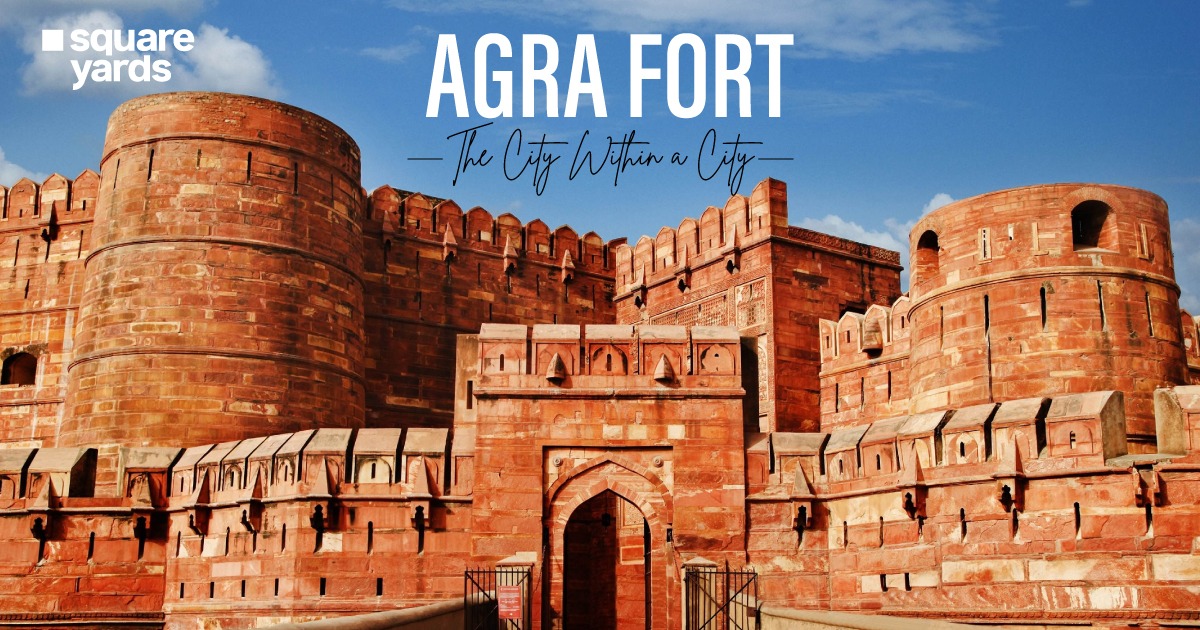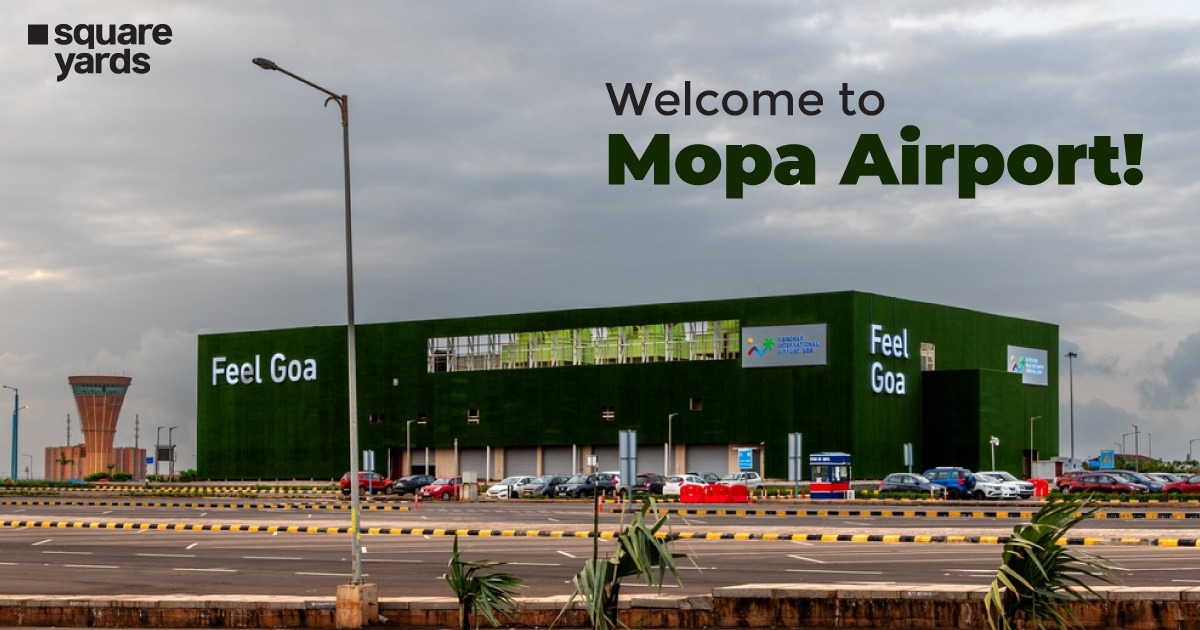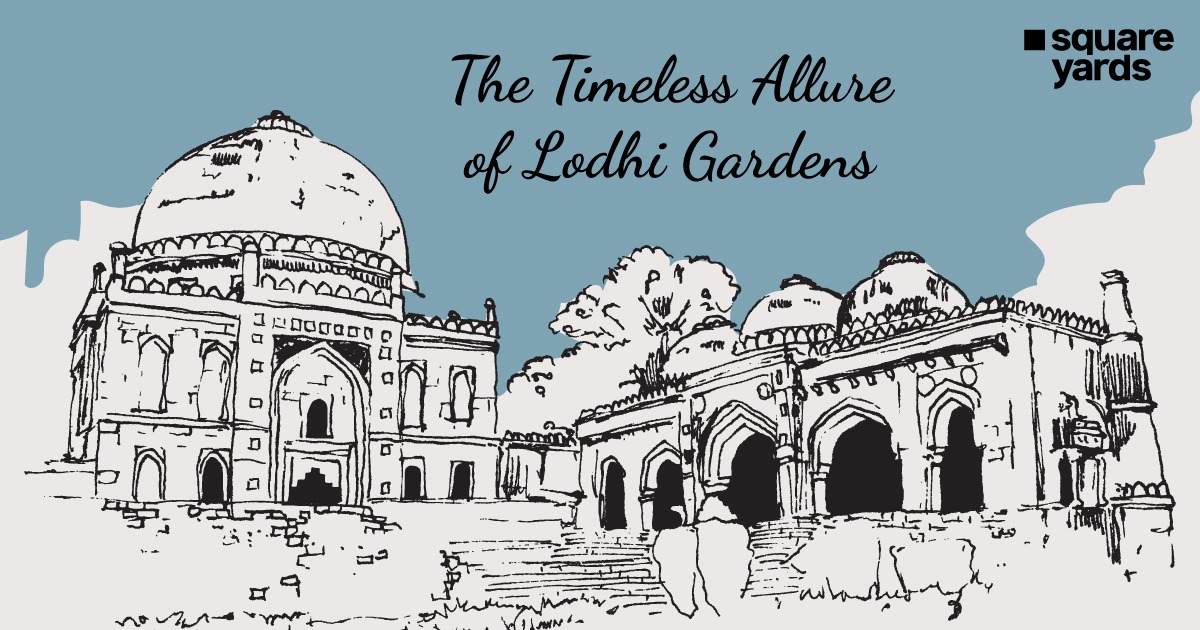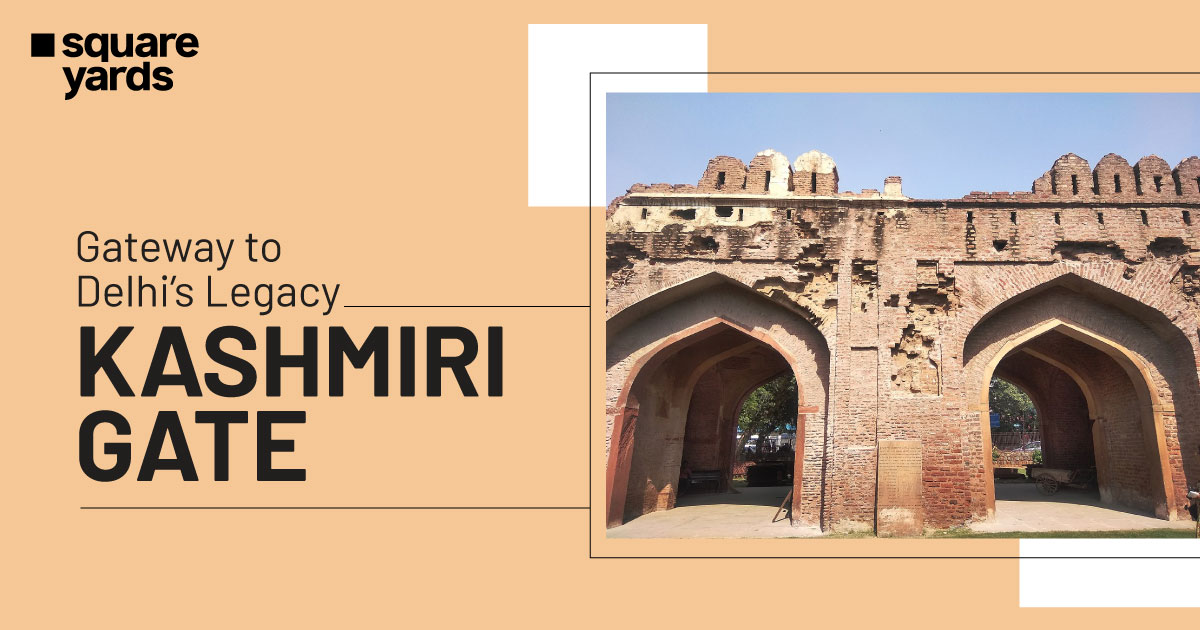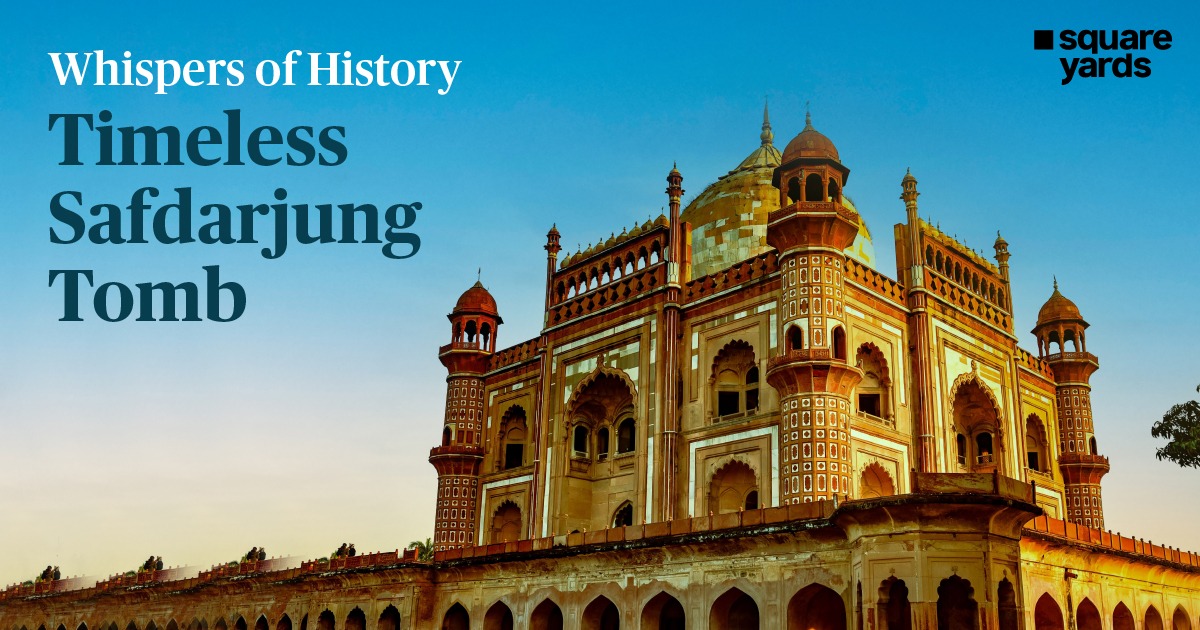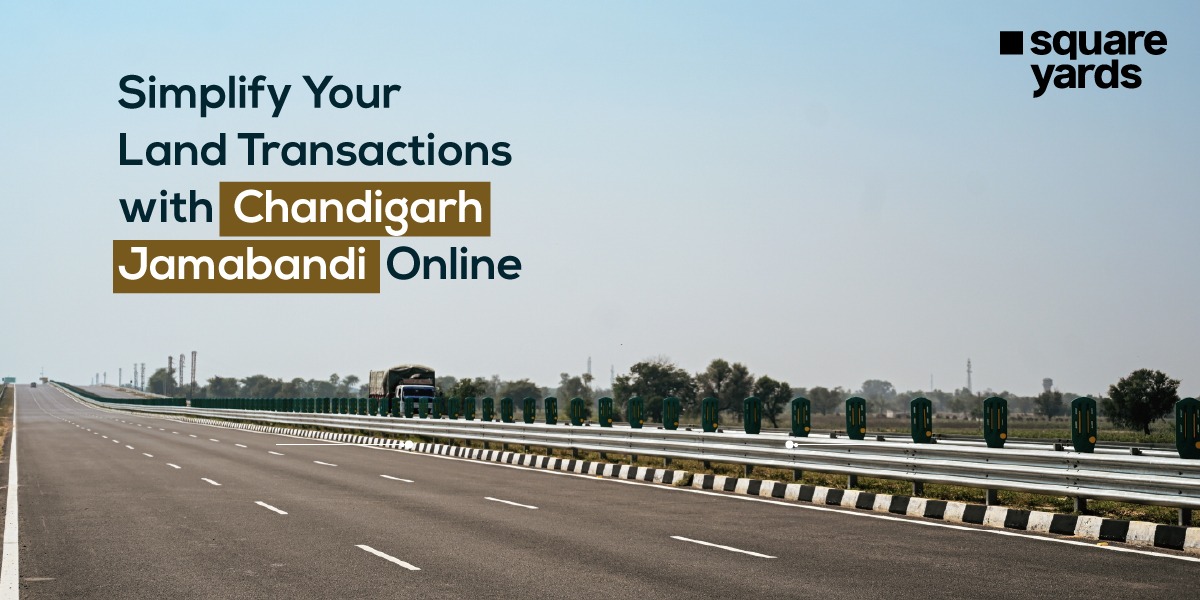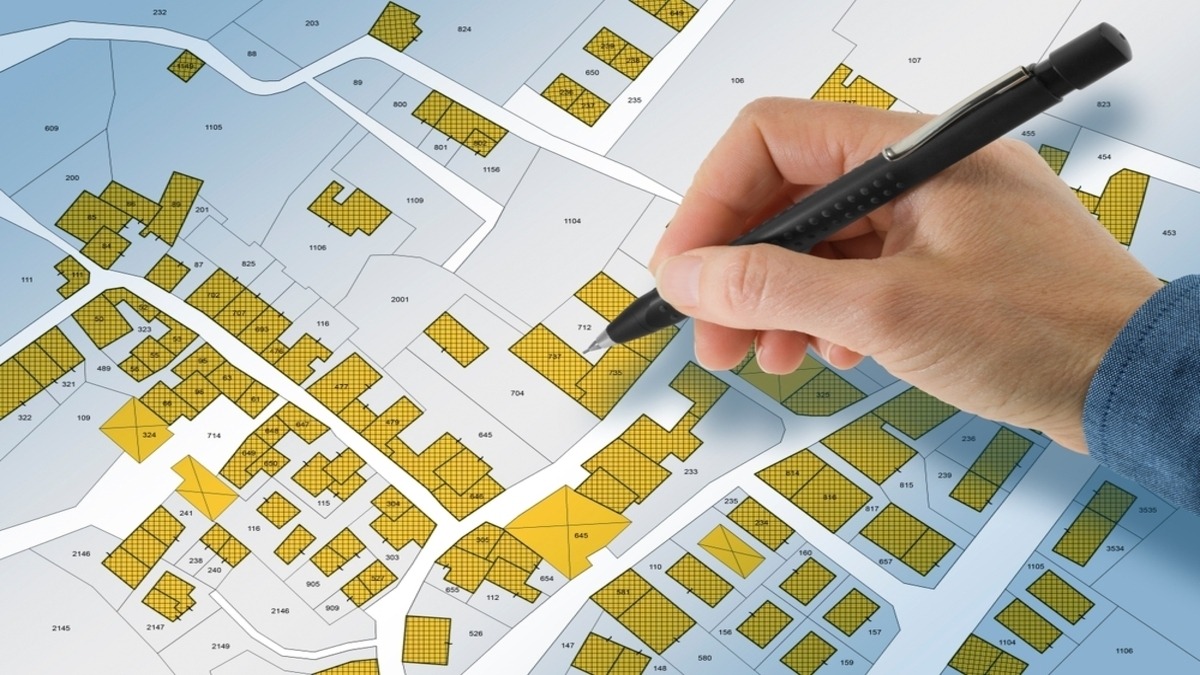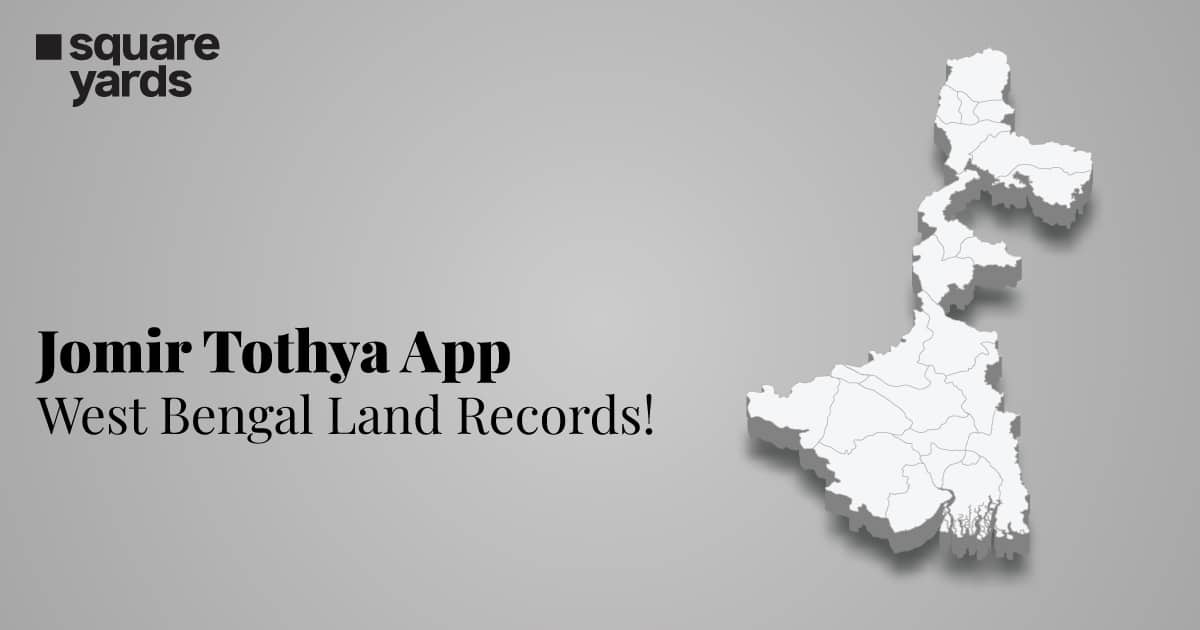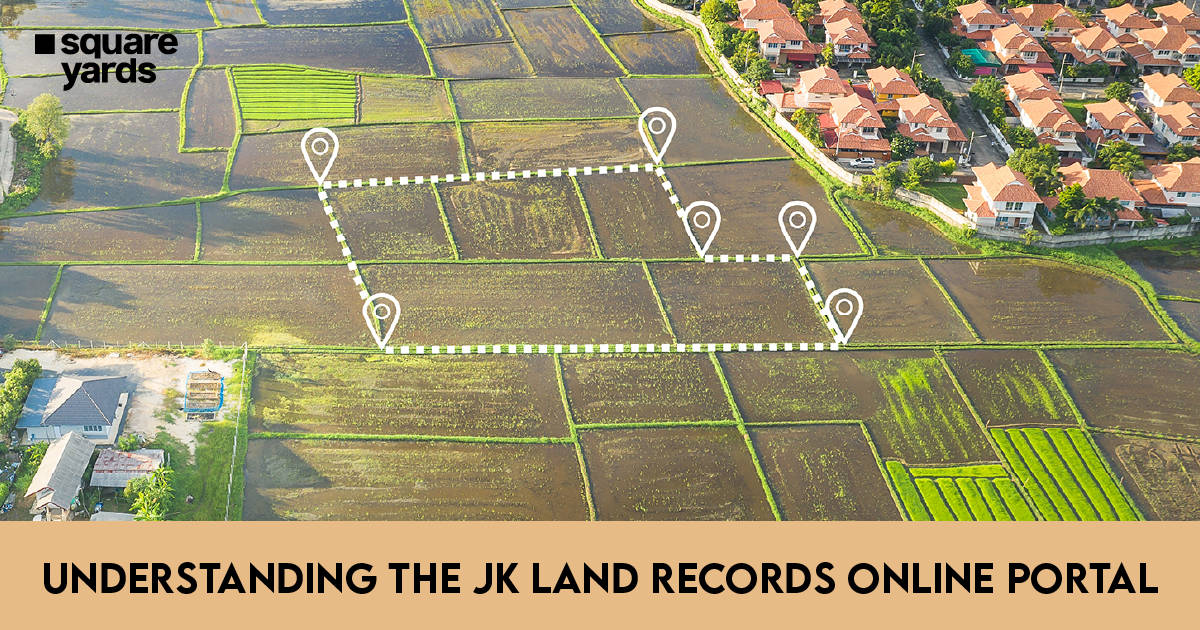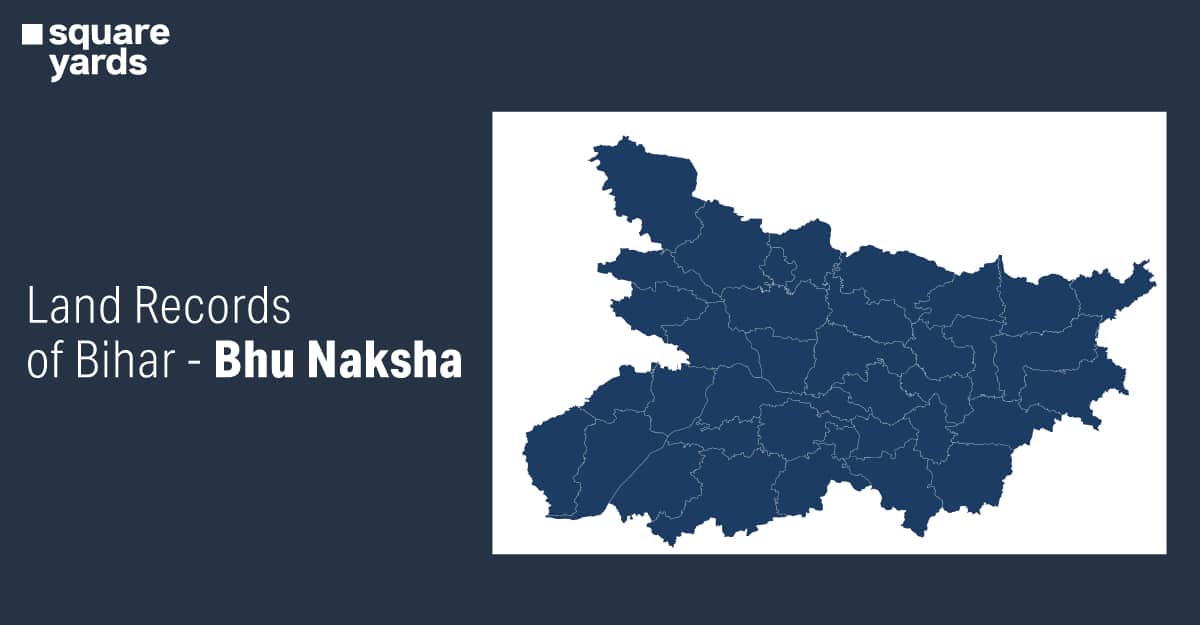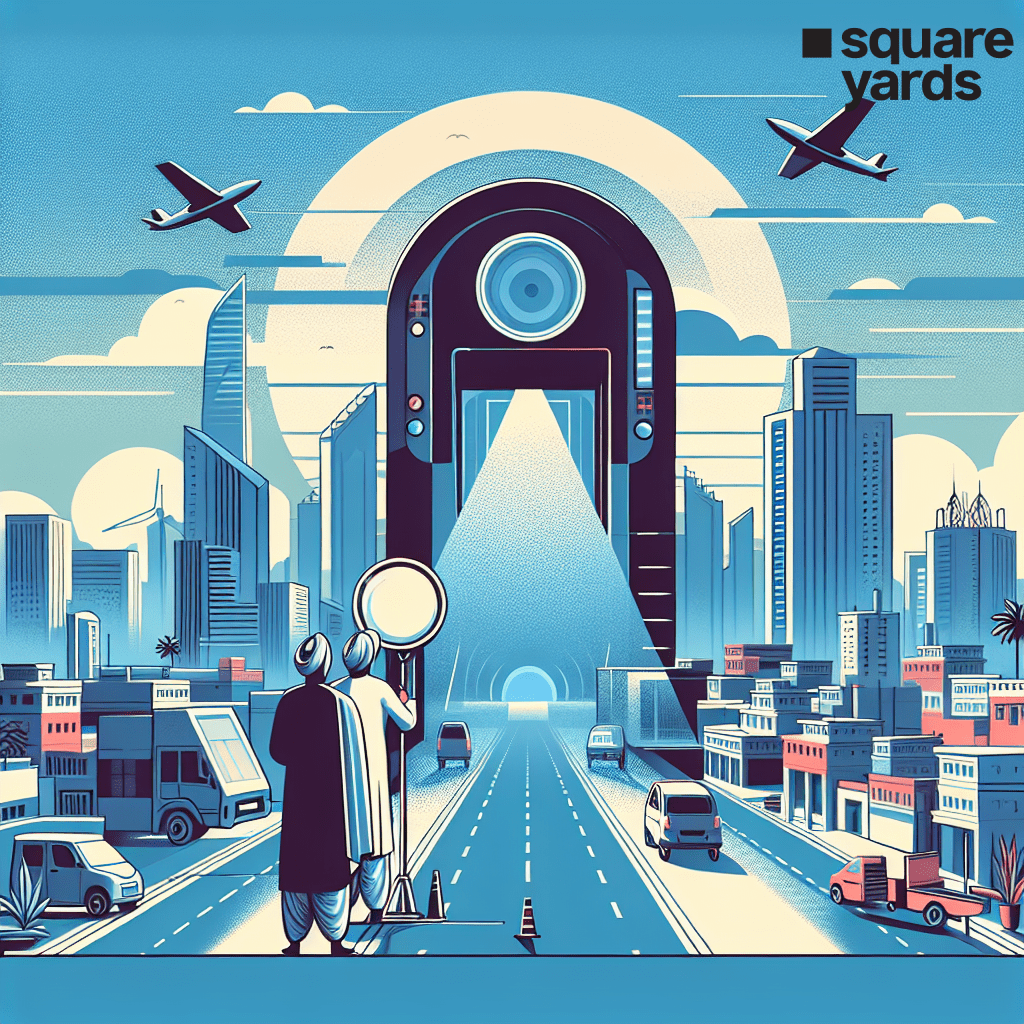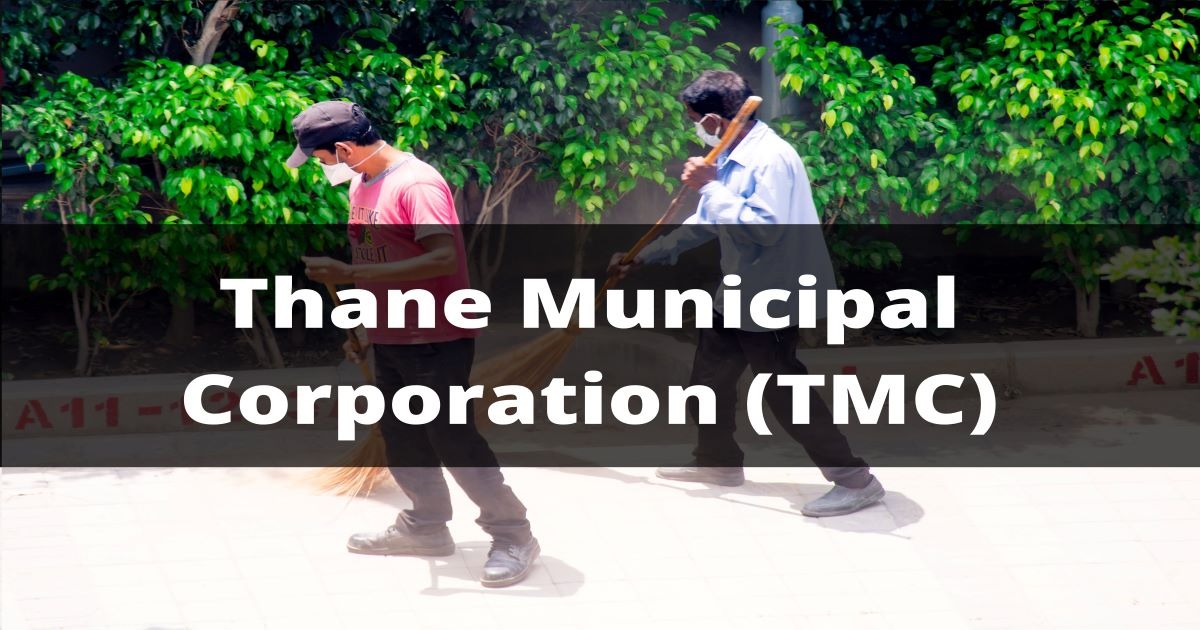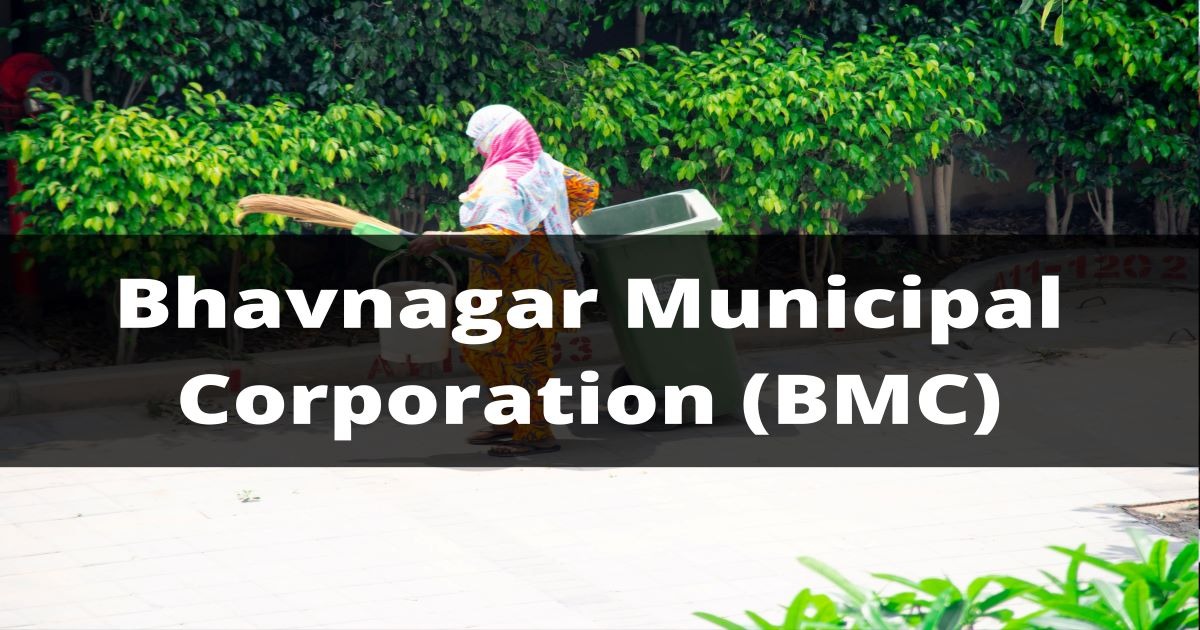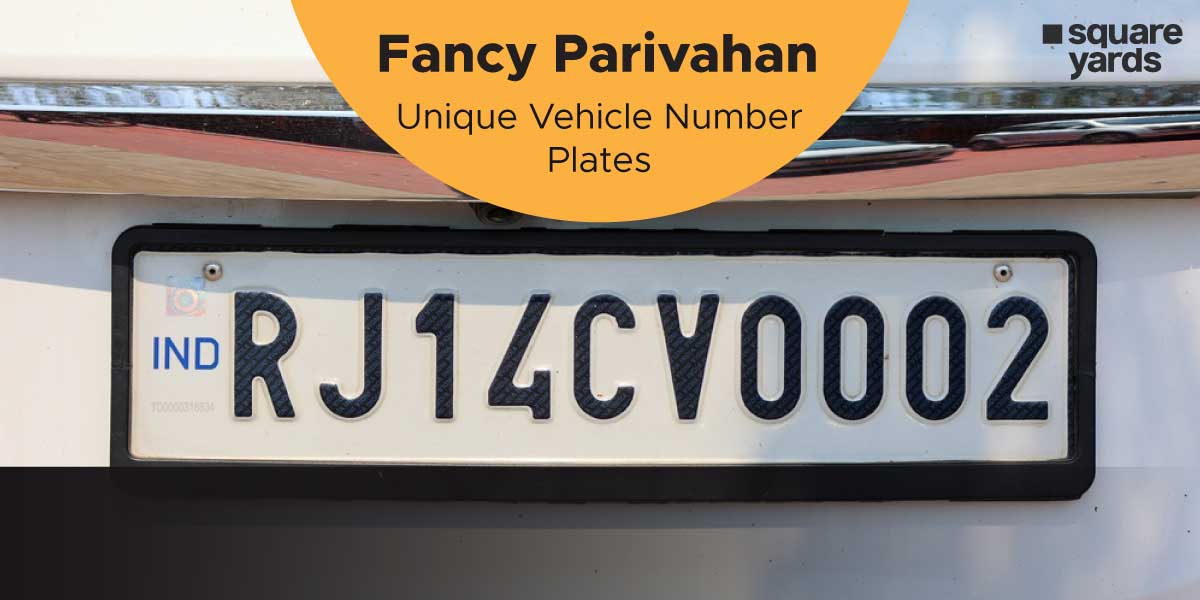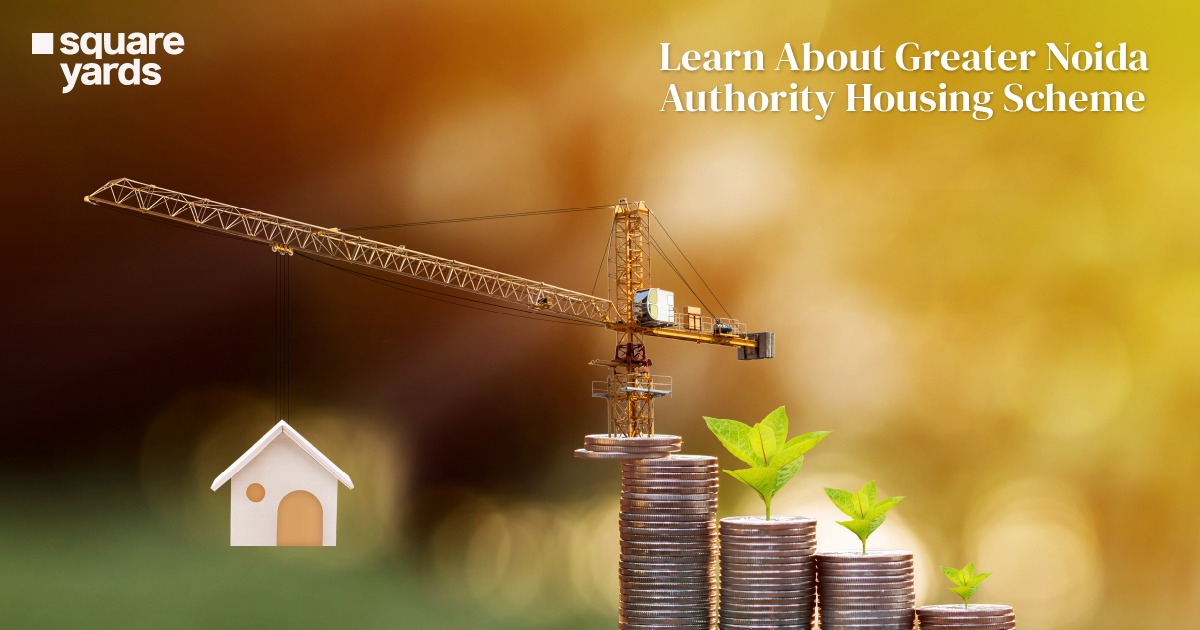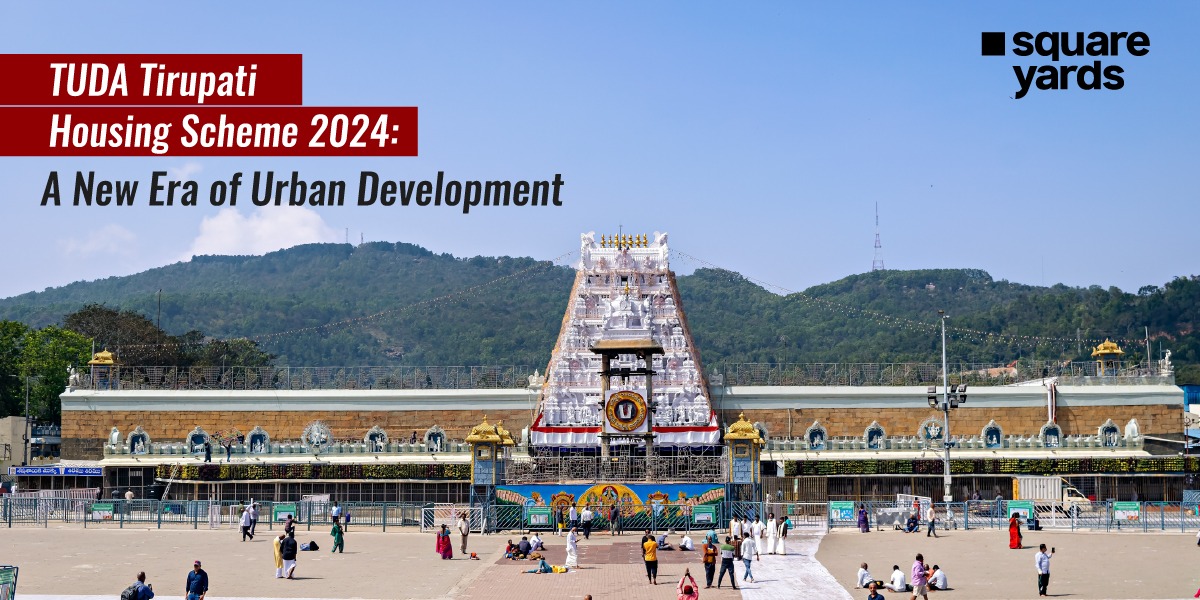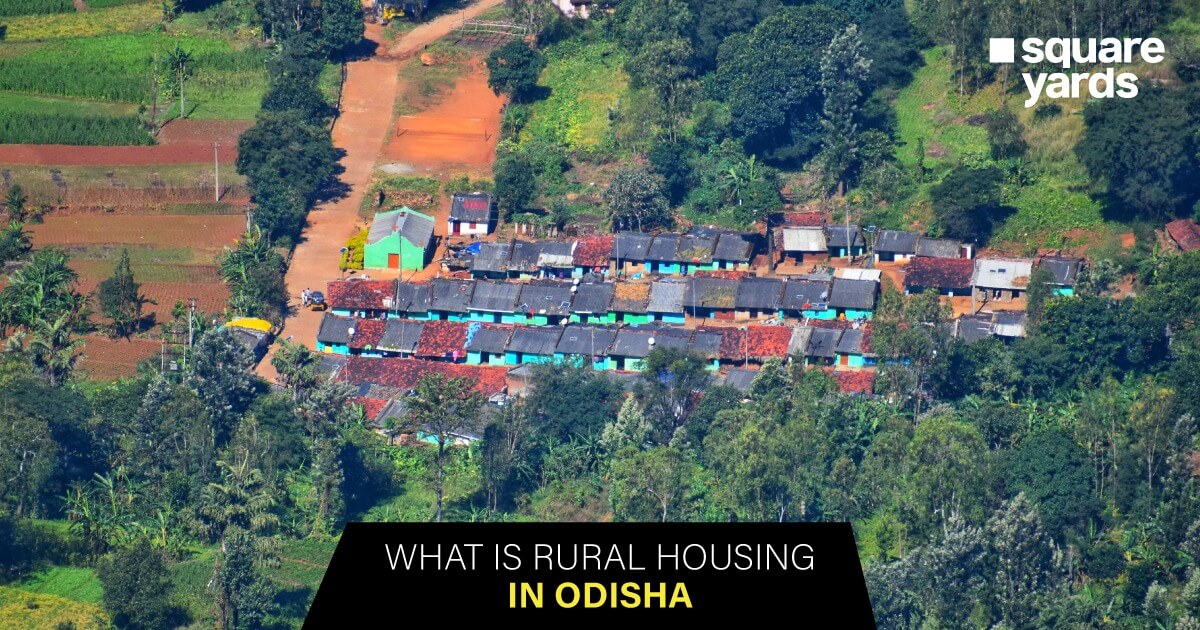We are about to step into a fort that served as the main residence of Mughal rulers up until the early 17th century. Imagine standing at the same place where the crowning ceremony of Al-Sultan Al-Azan, Emperor Humayun, took place. Think about roaming in the same corridors where Akbar the Great once walked with his flock of advisors and ministers. And experience the aura of the fort where Shah Jahan was held captive by his own son Aurangzeb.
We have all heard about Delhi’s Red Fort. Well, this is the Red Fort of Agra. Let us walk through the iconic and grand Agra Fort, explore its architecture and find the best ways to visit the monument.
Table of contents
- Badalgarh to Agra Fort: Tracing the Monument’s History
- Interesting and Unknown Facts about the Agra Fort
- Architectural Composition: Blending Indian & Persian Styles
- Exploring the Agra Fort Insides
- Power-play: Political Significance of the Agra Fort
- How to Visit the Agra Fort
- When to Visit: Timings and Entry Fees
- Other Attractions Near the Agra Fort
- A Heritage-laiden Marvel
- FREQUENTLY ASKED QUESTIONS(FAQ’S)
Badalgarh to Agra Fort: Tracing the Monument’s History
The Jahangiri Mahal, built by Akbar inside the fort’s complex.
What we know as the Agra ka kila today, was originally called ‘Badalgarh’. The fort’s origins are associated with the Rajput king Raja Badal Singh who is said to have built it in the 11th century. The fort then remained in ruin for over four centuries, housing Ghaznavi and Ibrahim Lodi, before finally reaching the hands of the Mughals.
The Mughal story began with the 1526 Battle of Panipat. After Ibrahim Lodi lost, Babur took over the palace. For the next 15 years, the fort’s ownership juggled between the Mughals and Sher Shah Suri, until the former finally reigned supreme. When Akbar made Agra the capital city of Hindustan in 1558, he made the fortress his base. He initiated its renovations and transformed the rubbles of ‘Badalgarh’ into the walled city of ‘Agra Fort’. Finally, the fort attained its present magnificence through the contributions of Shah Jahan, who was later imprisoned in the ‘Shahburj’ portion of the same fort.
From the 18th century onwards, the Marathas gained, lost and regained the fort’s control. Until they finally lost it to the Britishers in the Second Anglo-Maratha War of 1803. The fort later became a centre of the 1857 revolt for Indian freedom. Fast forward, what once lay in ruin today stands as a UNESCO World Heritage Site.
Interesting and Unknown Facts about the Agra Fort
As we embark on our exploration of the Red Fort of Agra, let us warm ourselves up with some interesting facts that you can flaunt on your next family trip.
- 4,000 workers worked relentlessly every day for eight years. The fort’s construction was finally completed in 1573.
- During the revolt of 1857, several British officers sheltered with their families in the Anguri Bagh situated inside the fort.
- The Ghazni Gate is a famous attraction within the fort today. However, it was installed by the Britishers and wasn’t a part of the original layout.
- The 4 gateways, namely the Khizri Gate, Amar Singh Gate, Delhi Gate and Ghazni Gate, opened in all four directions. Today, the general public can enter only through the Amar Singh gate.
- Emperor Jahangir installed an 80-foot-long ‘Chain of Justice’. The chain had 60 bells and stretched from the fort to the Yamuna River. Anyone seeking justice could ring the bell to attract the emperor’s attention.
Architectural Composition: Blending Indian & Persian Styles
The ‘Agra ka Kila’ is a fusion of Hindu and Islamic architecture. The Rajasthani, Gwalior, Bengali and Gujarati schools of Indian architecture blend with geometric gardens, fountains and flowerbeds of the Persian style in this magnificent palace. Arched gateways and Jharokha windows, domes and Chajjas, all co-exist in this harmonious blend of two very distinct styles.
The red sandstone of its 70-foot-tall walls gave it the name Red Fort of Agra. The fort has four main entrances. Elevated ramps made the ascent difficult to safeguard the fort from attacks and sieges. Think of armies of soldiers marching on their horses, yelling war cries and unsheathing their swords. Only to be proven impotent in the face of the fort’s grandeur.
The fort is built like a city within a city on the banks of the Yamuna River. There are courtyards, baolis, masjids and even marketplaces inside its complex. It is as delicate and ornamental from the inside as it is strong and invincible-like from the outside. Parts of the place radiate in Akbar’s red sandstone while other parts of it shine in Shah Jahan’s white marble.
The fort interiors were decorated with precious gems and stones. Shah Jahan’s iconic Peacock Throne adorned the courtyard of Diwan-i-Khas. The exquisite variety of stones etched on the throne included the prestigious Kohinoor diamond.
Exploring the Agra Fort Insides
Tourists enter through the semicircular fort through the Amar Singh Gate. Some of the iconic monuments inside the fort are listed below.
Diwan-i-Aam & Diwan-i-Khas
The Diwan-i-Aam was used by Emperor Shah Jahan to meet the general public. While the halls of Diwan-i-Khas stood witness to the emperor’s private meetings with his courtiers and officials.
Jahangir’s Hauz
Situated right in front of the Diwan-e-Aam is a monolith structure called Jahangir’s Hauz. Quite literally, it means Jahangir’s bathtub. Tiny steps lead into the 5-foot-tall tank with Persian inscription saying Hauz-e-Jahangir.
Ratan Singh ki Haveli
The Ratan Singh ki Haveli was built in the name of Maharaja Ratan Singh. The iconic haveli reminds us of the Rajput rule over Agra.
Shish Mahal
The Shish Mahal was Shah Jahan’s summer palace. The semi-dark interiors of the palace are covered with Syrian glass that twinkles and dazzles the entire structure.
Muthamman Burj
Muthamman Burj translates to ‘octagonal tower’. Shah Jahan breathed his last in this tower. Open balconies of the tower offer clear views of the Taj Mahal. Perhaps, Shah Jahan sat right there, looking at the Taj and reminiscing about his lost beloved Mumtaz.
Power-play: Political Significance of the Agra Fort
The Red Fort of Agra was the centre of political and administrative control. It is said that Ibrahim Lodi governed the city for nine years from this fort. Due to its strategic positioning, Emperor Akbar shifted the capital from Delhi to Agra. The popular ‘Agra ka Kila’ has witnessed pivoting political events, ranging from invasions and coups to attacks and wars. The fort also served important military purposes. Even today, the northern part of the fort is used by the Indian Army.
How to Visit the Agra Fort
The city of Agra is well-connected to other major cities. People from Delhi, Jaipur, Lucknow and other cities can commute via flights, trains or roads to experience the charming structure.
For those living in the city itself, the Agra Fort to Taj Mahal distance is only 2 kilometres. Local cabs and autos can comfortably help visitors reach the site.
Nearest Airport – Agra Airport
Nearest Agra Fort Railway Station – Agra Cantt and Mantola Railways Stations
Nearest Local Bus Stop – Idgah Bus Stop
Road Connectivity- Yamuna Expressway can be used for people travelling from Delhi. People travelling from Jaipur can use the NH21 which leads to Agra city via Fatehpur Sikri.
When to Visit: Timings and Entry Fees
November to February is a great time to visit the Red Fort of Agra. The winters and clear skies offer respite from the otherwise scorching heat. You can also stay back for the enchanting light and sound show organised after sunset.
|
Timings & Entry Fees | |
|
Open From |
6 am – 6 pm |
|
For Indians (cash/cashless) |
₹50/35 |
|
For Foreign Tourists (cash/cashless) |
₹650/ 550 |
|
For children below the age of 15 |
No ticket needed |
|
Light and Sound Show (Indians/ Foreign Tourists) |
₹70/200 |
Other Attractions Near the Agra Fort
If you’ve fully explored the Agra Fort and wish to explore nearby attractions, here are the 5 best places to visit.
- Taj Mahal, 2 kilometres away
- Ram Bagh, 5 kilometres away
- Mehtab Bagh, 6 kilometres away
- Akbar’s Tomb, 9 kilometres away
- Fatehpur Sikri, 38 kilometres away
A Heritage-laiden Marvel
The Agra Fort is a symbol of our historical and architectural legacy. It is a testament to the genius of the builders and architects from the bygone eras. The fort has seen the rise and fall of the Mughal empire, the might of the Marathas and the raging fire of the Indian freedom struggle. From monarchy to imperialism, and now democracy, if there’s one thing that has remained constant, it is this Red Fort of Agra.
FREQUENTLY ASKED QUESTIONS(FAQ’S)
Where is the Agra Fort located?
The Agra Fort is located in Rakabganj in the Agra district of Uttar Pradesh.
How to visit Agra Fort?
Residents of Agra can easily board a cab or taxi to visit the fort. Others can board flights, trains or interstate buses to reach the city.
Why is Agra Fort a famous monument?
The fort’s historical, political and cultural significance has made it an important landmark. Besides, the Agra Fort to Taj Mahal distance is only 2 km.
Is Agra Fort a UNESCO World Heritage site?
Yes, the Agra Fort gained the status of a UNESCO World Heritage Site in 1983.
How much time does it take to visit the Agra Fort?
On average, 2-3 hours are good enough to roam around the Red Fort of Agra.
Which metro station is near Agra Fort?
The Agra Metro will start operating in 2024. Until then, people can commute via personal transport or take a conveyance from the Idgah bus stop.
Is Agra Fort safe?
Yes. The government has made adequate safety arrangements for all visitors.
What is Agra ka Kila famous for?
Agra ka Kila is famous for its rich history. People interested in art and architecture visit it for its stone, marble and carvings.
Who built the Agra Fort?
The Agra Fort was built by Rajputs of the Sikarwar dynasty. Later, Akbar and Shah Jahan reconstructed the fort.


